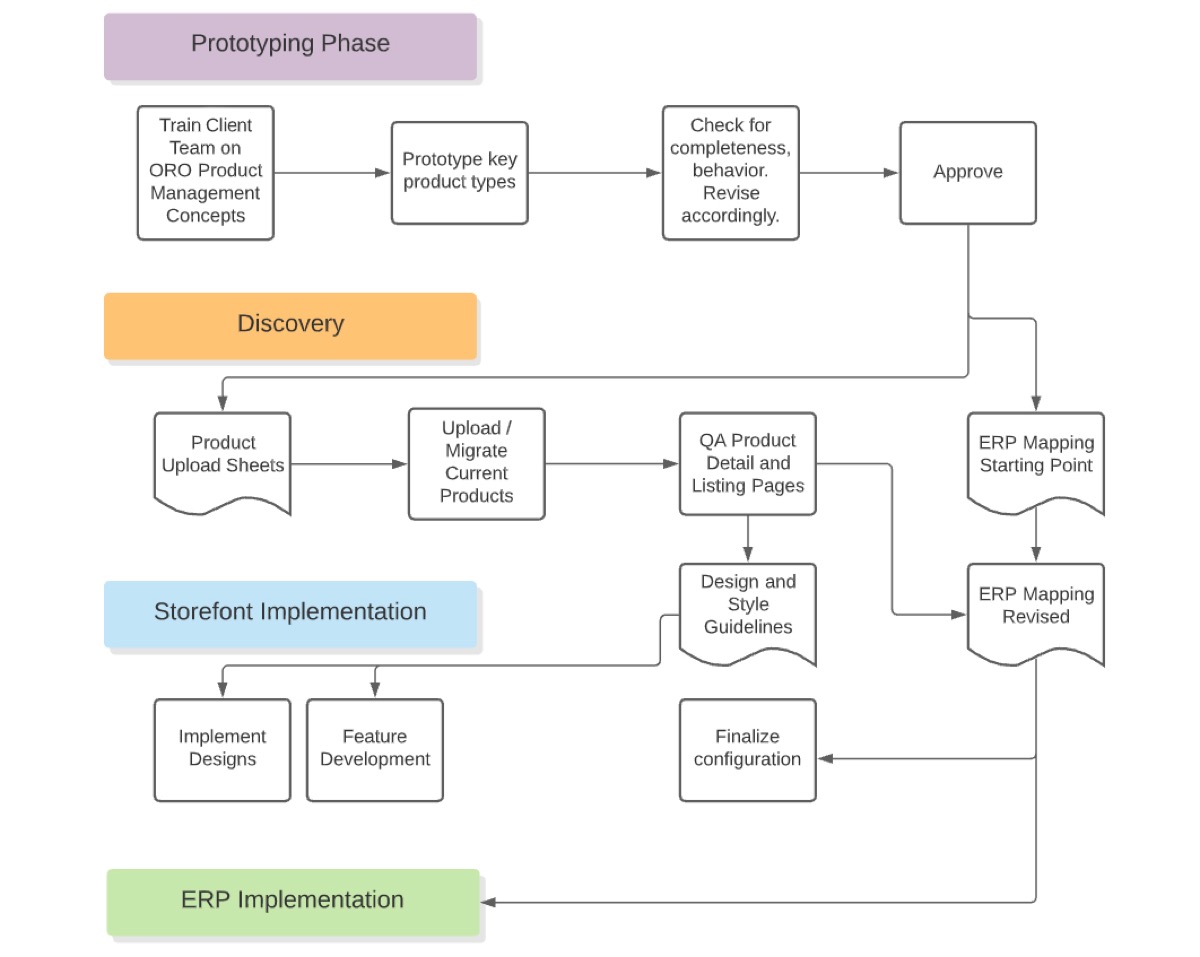
2026: When Your AI Overlords Take Over Shopping – Squinting Through My Crystal Ball

When creating a web store, the best approach is to start with the product catalog. A well-designed product database (the catalog) is the heart and soul of an ecommerce website, improving customer experience, reducing selling friction, as well as enabling and enhancing integration with external systems.
Catalog data can be very complex, especially in B2B stores. Thus, a thoughtful, careful approach to catalog development is critical.
But how can merchants be confident about their website products before the site is live? That’s where product prototyping comes into play. The main goal of product prototyping is to define a structure or data model that drives the desired user experience, and gives merchants a more defined visualization of the products and how they appear to consumers online.

First, let’s break down the prototyping process Razoyo applies, step-by-step:
Throughout the process, the base Oro design theme is used, though some small customizations may be added to the presentation layer to present the products for approval.

Because Oro’s catalog management system is both robust and flexible, it is a great tool to create visual examples, helping merchants understand how product management works in the platform and feel more confident about approving their web site structure. In addition to seeing realistic product pages, merchants are also able to easily identify gaps that need to be addressed in the later implementation phase.
Completing the prototyping process creates a solid foundation for the rest of the build process. Having a solid prototype will help smooth out the ERP integration and mapping process by creating an early view of final direction. It also pays off in increased knowledge and confidence in manipulating the Oro product catalog on the part of the client team.
We do this work up front, aiming to accelerate the launch of the web store so the client begins enjoying the benefits of the ROI as soon as the site upgrades to OroCommerce.
The prototyping process produces documents and information to drive other parts of the process. The final data structure will become the starting point for the ERP mapping process regarding product and catalog data.
The planning phase’s goal is to get a complete set of product information into Oro so that we can begin the implementation processes. We can begin Storefront Implementation after completion of the Discovery Phase.
The attached graphic focuses on the role of product data and catalog data design and shows how the output of prototyping is used in other phases of the project. These other phases include many other activities encompassing the full scope of the project.

The discovery phase covers a wide range of topics and produces:
The prototyping process may actually be expanded during discovery. However, having that base understanding of the direction we are going to implement products provides guidance for design implementation and integrations like tax, ERP, order management and so forth.
At the end of the Storefront Implementation phase, the client should be able to launch the Oro storefront. We load data, implement feature customizations (development) and design, finalize configuration and integrate with key external services. The prototypes will drive our work in loading product data. While iteration on catalog data will continue, having a solid prototype helps speed the process.
The ERP Implementation is the final phase in this process. More than likely, the ERP Implementation phase will overlap with Storefront Implementation. In this phase, the product prototypes serve as a starting point for mapping source-of-truth and syncronization strategies for catalog data.

Now that we’ve mapped out the product prototyping process, is your business up for the journey? Contact Razoyo today to get your ecommerce website ready to launch.
These links open AI platforms with pre-written prompts about this page.
Orange Lightest Background
Orange Light Background
Orange Medium Background
Orange Dark Background
Orange Darkest Background
Purple Lightest Background
Purple Light Background
Purple Medium Background
Purple Dark Background
Purple Darkest Background
We use cookies to improve your experience. Do you accept?
To find out more about the types of cookies, as well as who sends them on our website, please visit our cookie policy and privacy policy.